I've been playing with RFID (pronounced "arphid") tags and readers. I am excited about RFID because it's a robust solution to object identification (the "What?") that can complement an object tracking solution like the retroreflectors (the "Where?").
Origami to source code
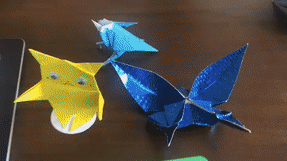
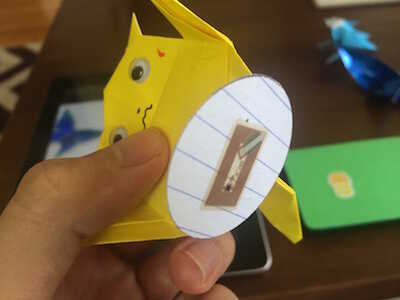
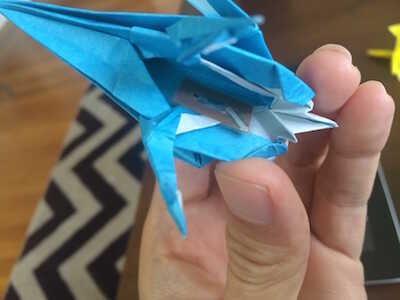
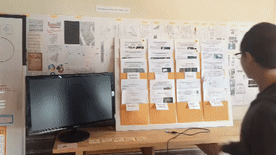
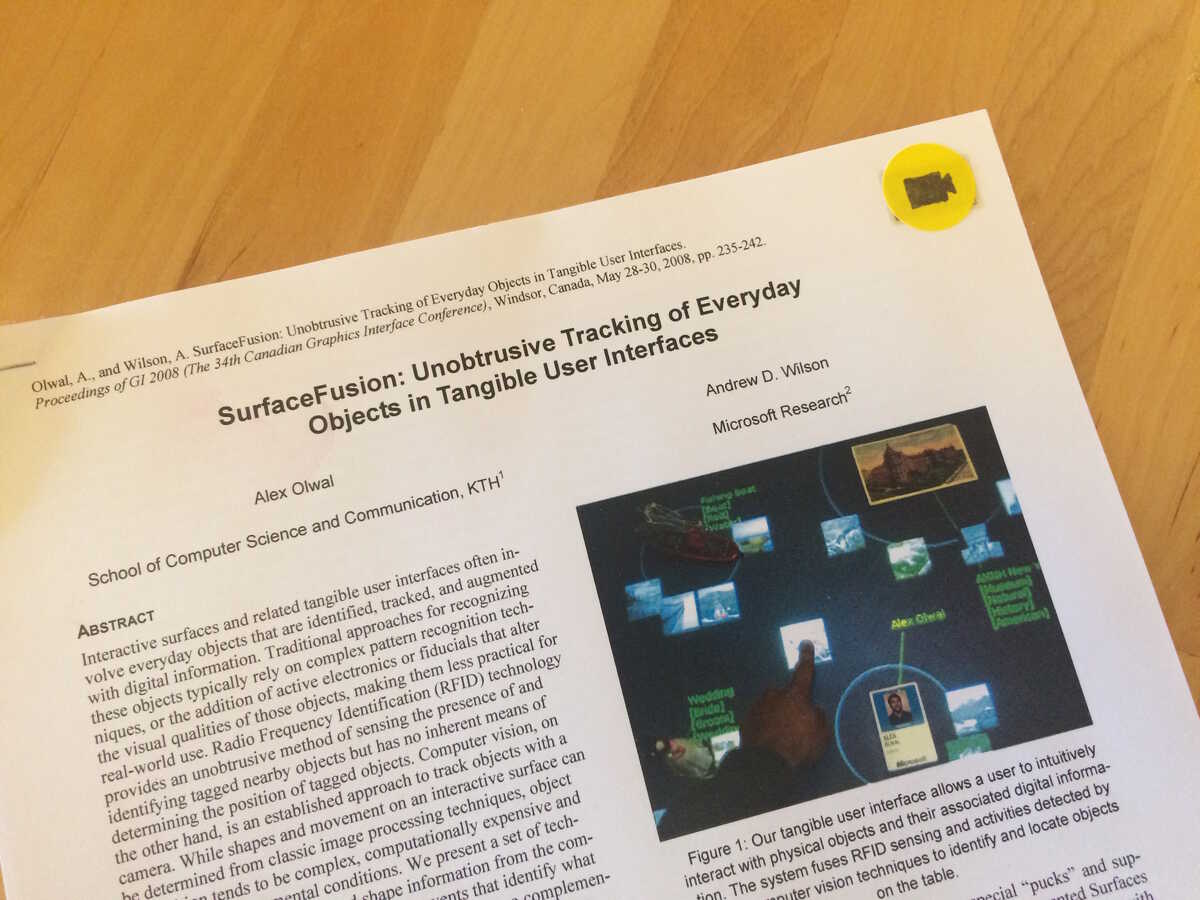
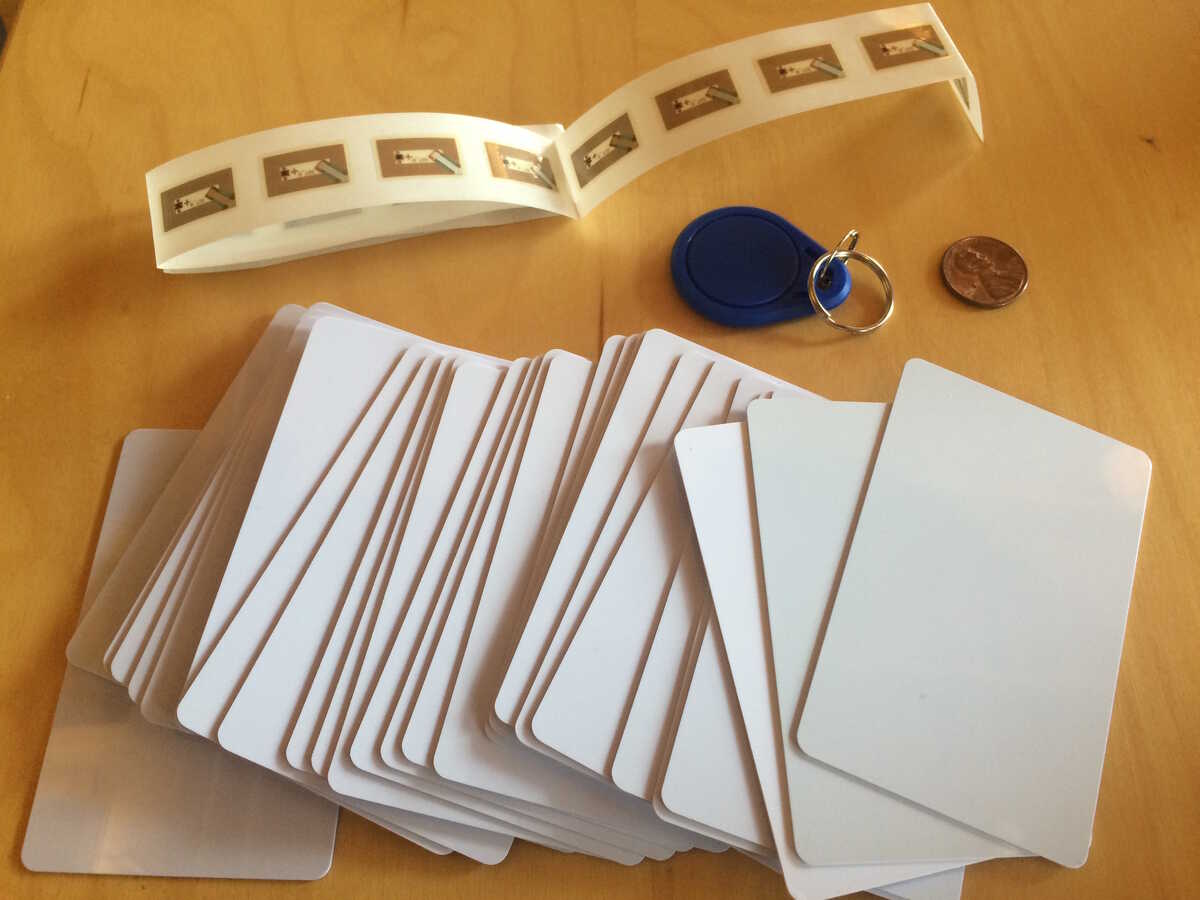
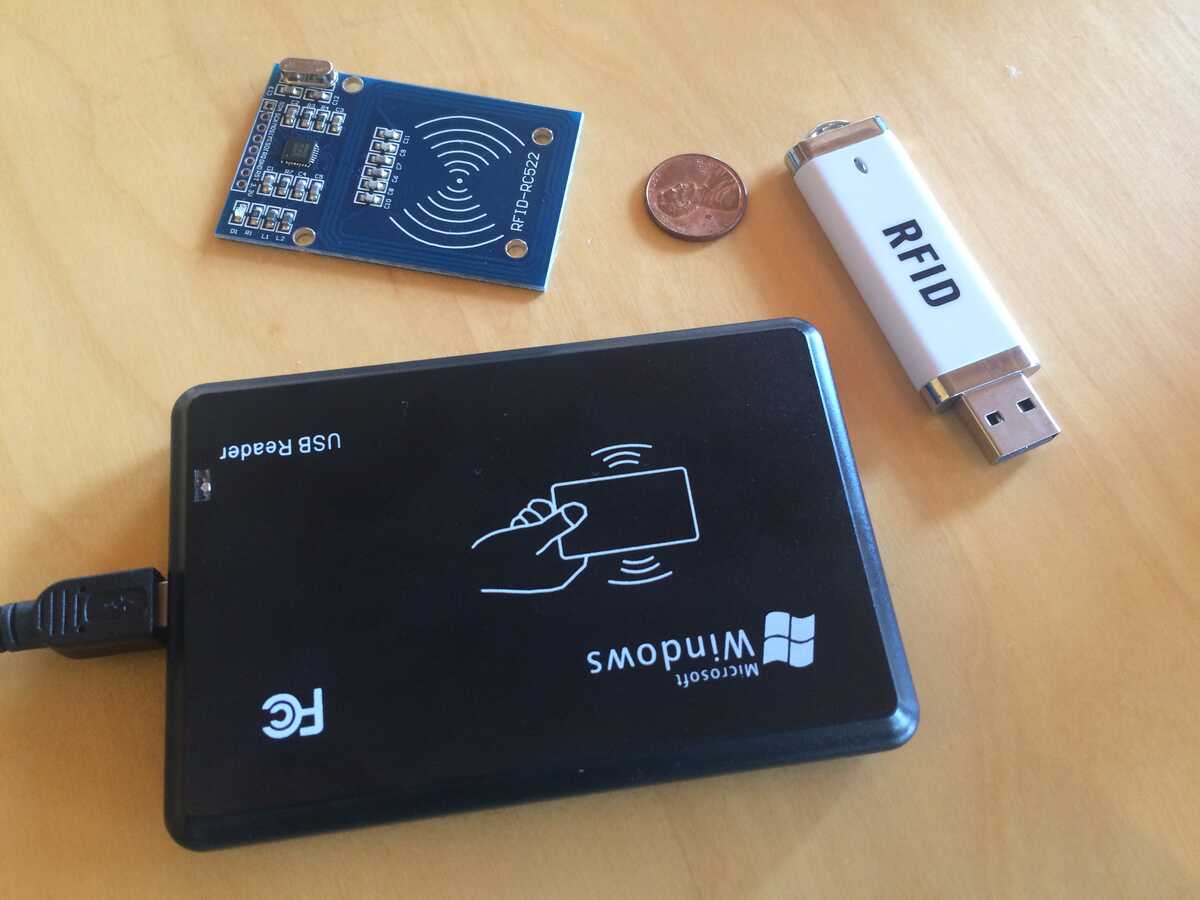
Over the weekend I made some origami figures that link back to their "source code".

(As we've noticed with crafty projects, they tend to attract collaborators. Mokey made the butterfly.)
The RFID stickers are embedded in the figures:


Papers to video
A lot of papers these days have video trailers. I linked a few of the papers in our research bins to their trailer.

The nice thing about this is you can take the papers out and the RFID booping still works since the ID is the sticker (I should have shown this in the video).

Form factors
These are the tags I have (more stickers coming):

And these are the readers I have:

The USB readers act as keyboards. You scan a tag and they type an ID number and hit enter, like a USB barcode scanner. So they're super easy to prototype with.
The chip is for plugging in to Arduino/Raspberry Pi. These chips are $2.50 on ebay. They speak SPI. Maybe we can prototype an RFID grid / game board.
Ideal form factor
I think my ideal form factor would be a wireless version of the booper from the paper trailers demo. The boop would wirelessly transmit the ID to the system and also blink an LED on the pen tip. This would correlate the location of the pen with the ID, bridging the "What" and the "Where".
Even better would be if the laser pointer and the booper were a single object. This could be the primary pointer object in the system.
The retroreflector system tells us the 3D location of the retroreflective dots, but doesn't tell us what those dots mean. When you boop an object, the identity is correlated with the location. Once this is correlated, we can track the dots and preserve identity, but if we lose track of the object (e.g. you put it in a drawer) we can always re-correlate with another boop. So the interaction I imagine is generally you'd just laser point at objects, but occasionally you laser point and the object gets highlighted in red. This means you need to physically touch the object with your laser pointer to get its identity. You'd only have to do this when we lose tracking.
Such a system would also allow us to interact with objects in areas where we haven't set up cameras.
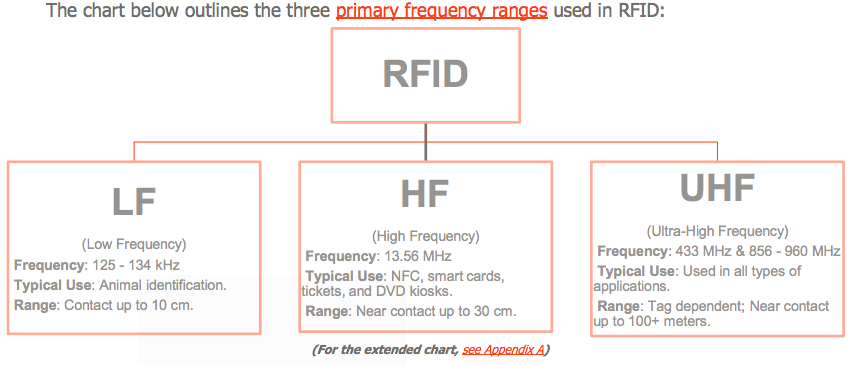
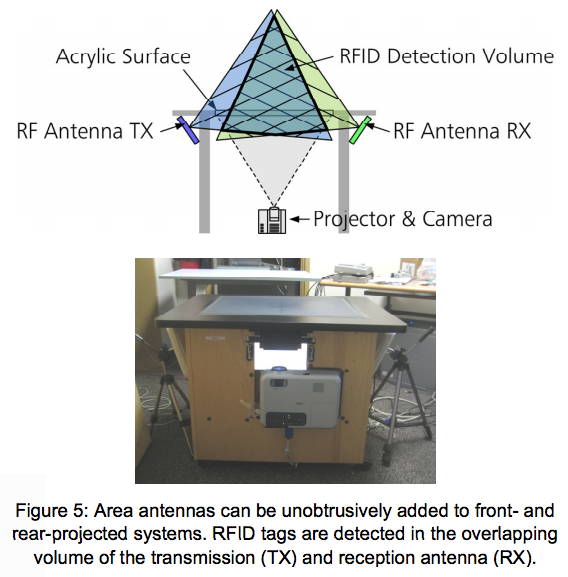
More than you want to know about RFID
An RFID system consists of tags, readers, and antennas (which are often built in to the readers). The tags are passive (unpowered) and the reader's antenna resonates the tags which enables it to talk to them. There are also active tags which work over longer distances but these are ~$30 each and bigger (due to battery) so we might as well use bluetooth low energy devices at that point.
Each tag has a unique ID set by the factory and also has a small amount of memory (< 1000 bytes) to store a URL, dollars left on your clipper card, etc. The memory is read/writeable by the reader. Since we have a centralized database, we are probably more interested in the unique ID of the tag and we'd store any memory we want to associate in the database.
There are three standard frequencies that RFID systems use.

We are most interested in HF (13.56MHz) and UHF (856-960 MHz).
HF is the most common at the consumer level and the readers and tags are easy to buy on Amazon.
NFC (Near Field Communication) piggybacks on HF RFID. NFC is what Android phones use to talk to each other and other things they touch. The new iPhone has this capability too, but it is currently only exposed for Apple Pay. The way two NFC devices talk is that each one consists of a reader and a tag. They read and modify each others tag memory according to the NFC protocol. There is a Tom Igoe book about NFC in the library. I don't think we'll need to use the NFC protocol per se, but its popularity means that it's really easy to buy HF tags on Amazon (search NFC tags).
UHF is what warehouses use to track all their stuff. SurfaceFusion also uses UHF:

(The antennas are the big white rectangles on tripods under the table.)
The advantage of UHF is that it can read tags much farther away than HF (which is designed for near contact). It can also read multiple tags within a volume, which at least the cheaper HF readers cannot do. The disadvantage is that it's more expensive and harder to research and experiment with because it's mostly used in big installations (warehouses).
All RFID systems suffer from interference. For example, the stickers I bought do not work if they're close to metal (including our magnetic whiteboards). But you can buy stickers that work on metal. I ordered some and will report back. Apparently UHF gets interference from water (e.g. bodies). So the volume it detects is variable.
Also the relative orientation of the tag and the antenna matters. The readers I have work best when they are parallel to the tag. They do not read if they are perpendicular.
I think I've summed up everything we need to know about RFID, but for more info I found this document helpful.